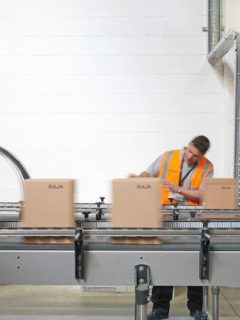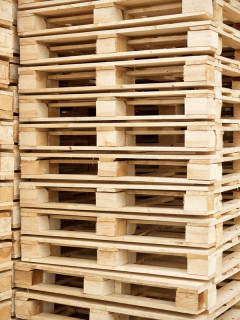Because quality packaging would be worthless if the goods were not protected inside, you should consider using desiccant bags to absorb moisture. Depending on your industry, and the type of goods you ship, it may be worthwhile, if not essential, to use them to ensure optimal protection inside your package.
When it comes to professional packaging, you need to ask yourself two questions:
- Is my packaging of good quality?
- Are the goods inside well protected?
To leave nothing to chance, there are solutions.
Anti-moisture desiccant bags, or desiccant bags, are ideal for protecting your goods. Small and discreet, they have strong absorbent properties, keeping your products dry. You have everything to gain by integrating them into your packages.
This article was updated in December 2020.

The desiccant bag: what is it?
The desiccant bag, sometimes also called a desiccant bag or simply a moisture absorber, is a product designed to protect goods.
What is a desiccant bag?
The definition of a desiccant bag is simple.
As the name suggests, it is a product that has the function of absorbing moisture from the environment.
Often found in packages containing foodstuffs or clothing, moisture absorbers improve the transport conditions of your goods.
Moisture absorbing bag: how does it work?
A desiccant product is defined by its drying properties.
This absorption capacity comes from two types of minerals in particular:
- Silica;
- Clay.
Although each type meets its own needs, the functions are identical and the processes similar.
How to use a moisture absorber? Simple. Another important advantage of a desiccant bag, in addition to reducing the level of humidity, is its ability to absorb bad odours.
Simply place one or more (depending on the size of the shipment) small sachets of silicon or clay balls in your parcel.
The crystals (in the form of beads) inside will absorb the moisture from the package in which they are placed.
Silica gel: from food to electronics to textiles
Also known as silica gel, this is the most widely used gel today.
With a strong drying power, the silicon beads in a desiccant bag keep your packages dry.
The use of silica desiccant bags is recommended in the following cases:
- You are transporting clothes;
- You are transporting pharmaceutical products;
- You ship food products;
- You deliver electronic products.
Highly effective and non-toxic, silica gel is a desiccant solution that is suitable in most cases and is an excellent value for money to combat moisture or water vapour effectively in your orders.
Clay: the ultimate anti-corrosion agent
In addition to silica, a desiccant product can also contain clay to help dehumidify your packages.
Not only does clay have drying properties, it is also recommended to protect your goods from corrosion.
This makes it ideal for companies in the following sectors:
- The food industry ;
- The mechanical industry;
- Maritime transport.
The clay-based desiccant bags are 100% natural, and of course non-toxic.
|
Note: Desiccant bags can also be made of calcium chloride or magnesium chloride, both of which have the same moisture-reducing absorption properties in powder or granular form. |
The benefits of desiccant bags
As we have seen, desiccant bags absorb moisture and offer effective and discreet protection against a range of threats to your goods.
Anti-moisture bags are suitable for combating:
- Oxidation
- Corrosion;
- Powder caking ; Mildew
- Mildew;
- Humidity.
But their use is also highly recommended in the singular case of food transport.
The transport of foodstuffs – especially fresh ones – requires special packaging.
Attaching food moisture absorbing bags to food shipments helps to improve the preservation of the food.
As the moisture is absorbed, the goods have more time to reach their destination in the best possible condition.
In addition to their non-toxicity, silica or clay desiccant bags are reusable.
The absorbency of the desiccant bags is not limited to the transport of goods, so we recommend that you reuse your desiccant bags.

Regenerating your desiccant bags
The use of desiccant bags is not a one-off, far from it: a desiccant bag can be reused several times.
However, once it has reached its destination, it may have become saturated with moisture – and therefore unusable.
However, it is very easy to regenerate your desiccant bags:
- Place the gel sachets in a container;
- Heat the container to between 120°C and 150°C for one hour.
The desiccant bags thus regain all their absorbent properties, and can be used again, without the need for refills!
The applications are in fact numerous, covering a variety of fields of application that go far beyond the spectrum of goods transport.
Silica gel or agile gel can be very effective in everyday use:
- To keep cupboards and wardrobes dry, and avoid all moisture problems;
- Keeping a windscreen free from condensation and fogging;
- Avoiding bacteria or mould growth in the bathroom or in a sports bag;
- Keeping old photographs free from moisture;
- Trying to rescue a phone that has fallen into a large volume of water.
Desiccant bags have important drying properties.
They not only keep all your shipments dry, but also ensure that your shipments of sensitive goods (such as food) are better preserved.
Finally, clay also has anti-corrosion properties that make it suitable for use in industrial environments.
Remember that the life of an anti-moisture bag does not end once the parcel is opened, and it has many applications in the home.
Three key points to remember:
- Desiccant bags are made of silica gel or clay.
- Both are non-toxic and can absorb moisture from the space where they are placed, including your packaging.
- The bags can be regenerated by heating them for 1 hour, and have a multitude of ingenious applications at home.
















